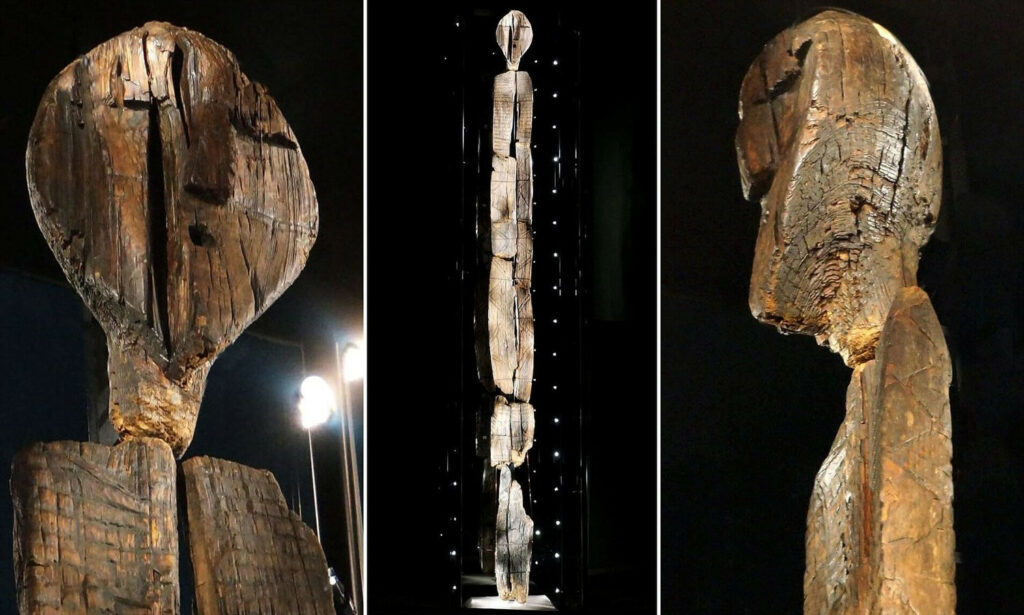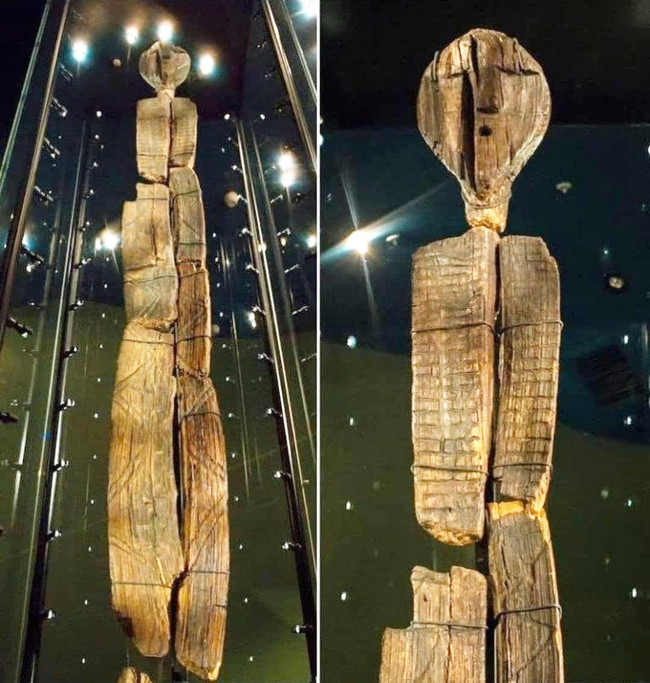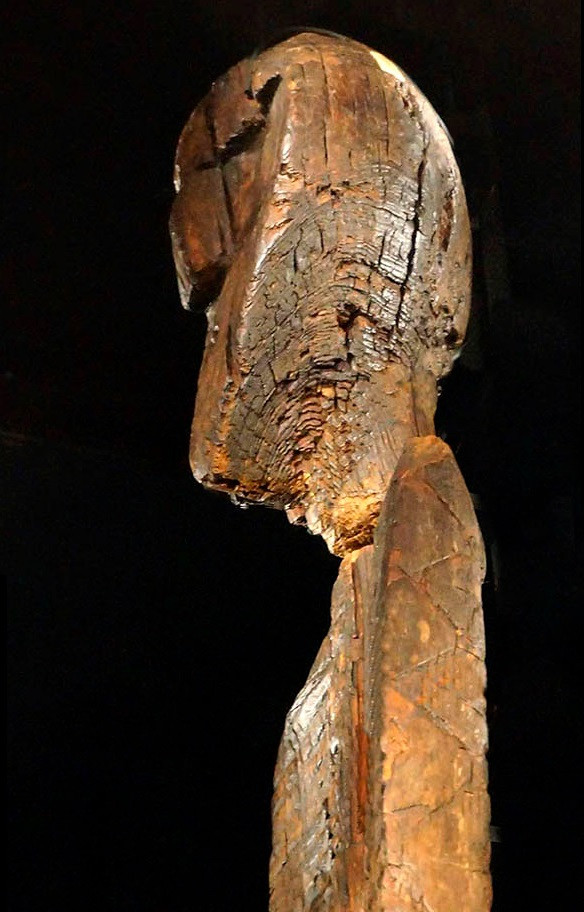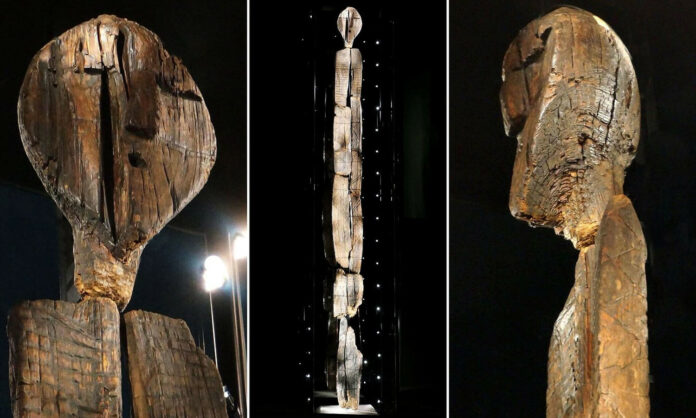An Unexpected Discovery in the Urals

In 1890, gold miners working in the Shigir peat bog of Russia’s Ural Mountains made an extraordinary discovery. Buried deep within the earth, they unearthed a colossal wooden sculpture that would come to be known as the Shigir Idol. Standing at an impressive 5.3 meters tall, this ancient artifact was intricately carved from a single larch tree trunk, its surface adorned with mysterious geometric patterns and symbols.
Unraveling the Idol’s Secrets
A Testament to Ancient Artistry

As archaeologists began to study the Shigir Idol, they were astounded by its age and craftsmanship. Using advanced dating techniques, researchers determined that the sculpture was created approximately 11,500 years ago during the Mesolithic period. This revelation sent shockwaves through the scientific community, as it meant the Shigir Idol predated even the pyramids of Egypt by thousands of years.
Decoding Ancient Symbols

One of the most intriguing aspects of the Shigir Idol is the complex array of carvings that adorn its surface. Zigzags, triangles, and stylized figures dance across the wood, hinting at a sophisticated symbolic language. Scholars have proposed various interpretations, from early writing systems to representations of spiritual beliefs. While the true meaning of these symbols remains elusive, they offer tantalizing glimpses into the minds of our distant ancestors.
The Idol’s Cultural Significance
A Source of Pride and Identity
For the indigenous communities of the Ural region, the Shigir Idol holds deep cultural significance. Many view it as a tangible link to their ancestral past, embodying the spirits and traditions of their forebears. In recent years, the Idol has become a catalyst for cultural revitalization, inspiring pride and renewed interest in ancient heritage.
Challenging Our Understanding of the Past

The existence of the Shigir Idol has forced scholars to reconsider long-held assumptions about prehistoric societies. Its sophisticated artistry and complex symbolism suggest that early human cultures were far more advanced than previously believed. As such, the Idol serves as a powerful reminder of the depth and diversity of human expression throughout history.
Preserving an Ancient Legacy
Today, the Shigir Idol resides in the Sverdlovsk Regional Museum of Local Lore, where dedicated conservators work tirelessly to ensure its preservation. Using cutting-edge techniques like 3D scanning and chemical analysis, researchers continue to unlock new secrets hidden within this ancient treasure.

As we stand in awe of this 11,500-year-old masterpiece, we are reminded of the enduring power of human creativity and the countless stories yet to be uncovered from our shared past. The Shigir Idol stands as a silent sentinel, bridging the vast expanse of time and connecting us to the hopes, dreams, and beliefs of our ancient ancestors.

